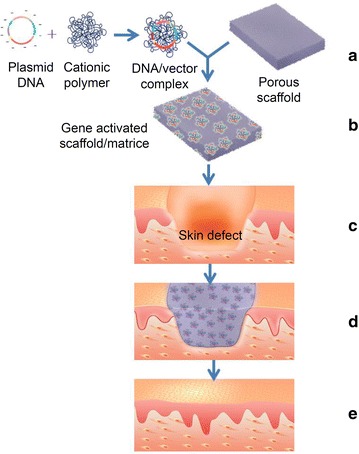Fig. 2.

Schematic illustrating the construction of a gene activated scaffold/matrice and its application in skin defect. (a) Formation of a plasmid DNA/cationic polymer complex which is then loaded onto a scaffold. (b) A gene activated scaffold/matrice. (c) A deep skin defect. (d) Transplantation of a gene activated scaffold/matrice which fills the skin defect. (e) vascularization of the scaffold accompanied with repair and regeneration of the skin
